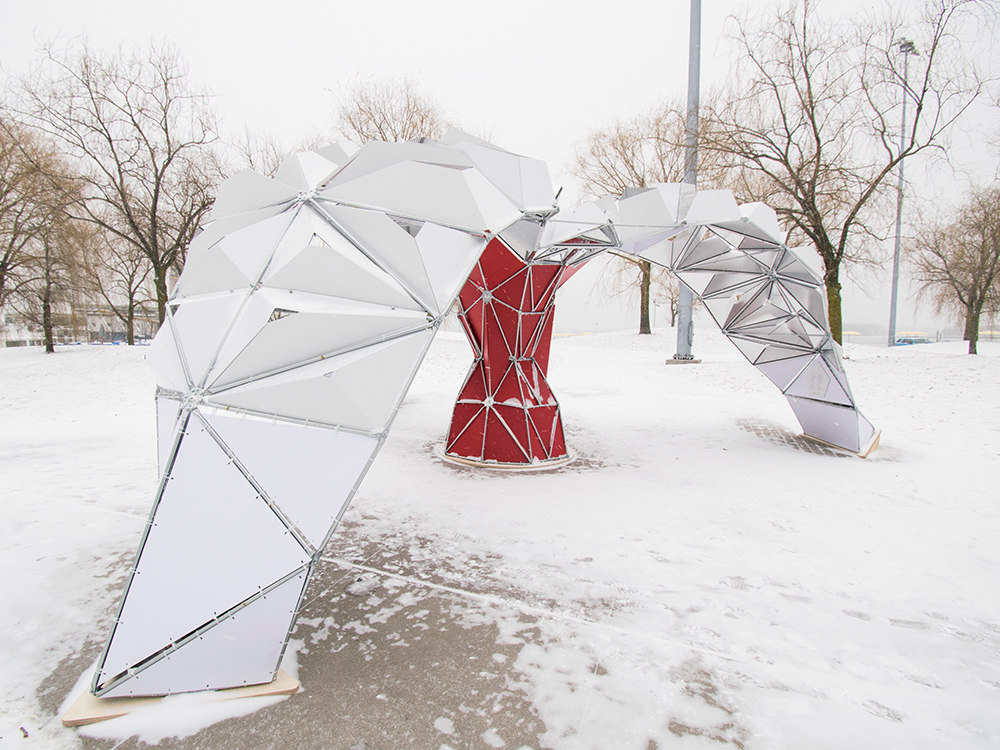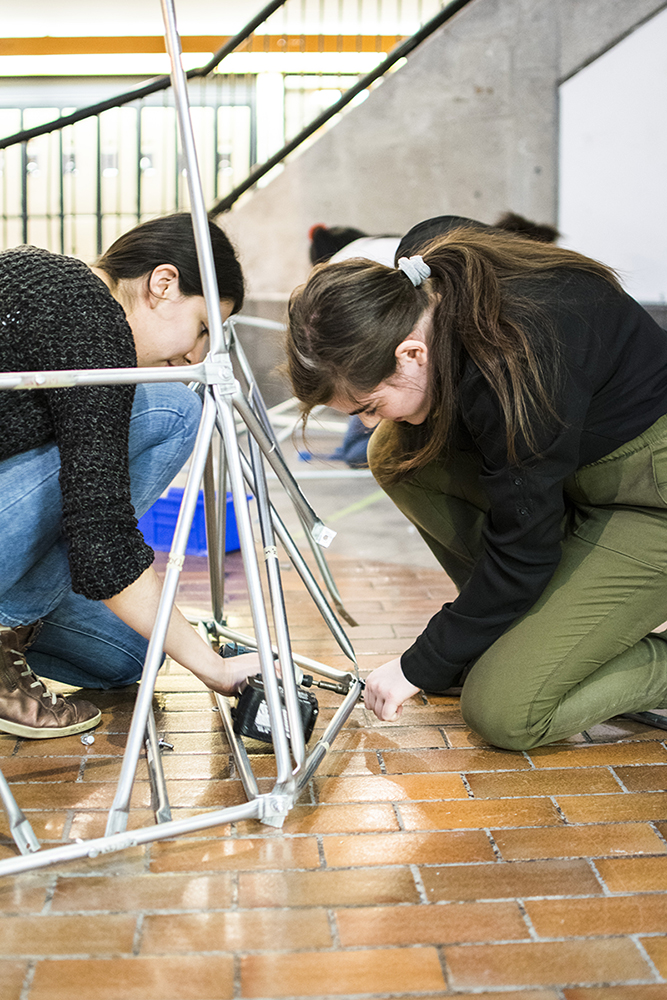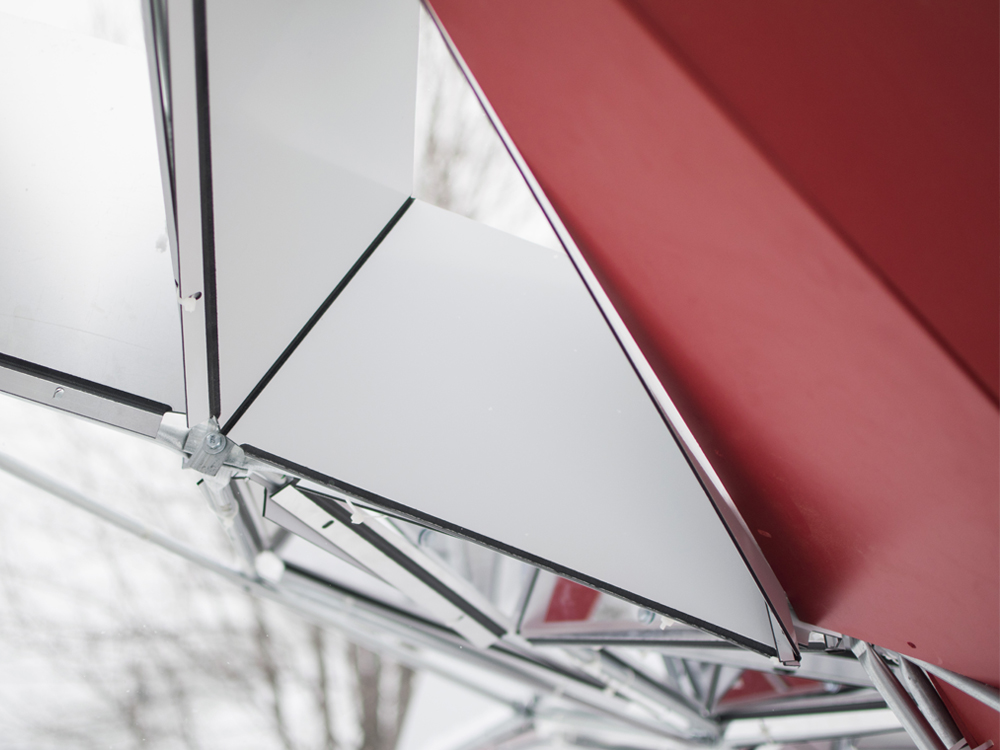Tripix: DAS Students Work to Animate the Toronto Waterfront

Photo: Tripix On Site at the Waterfront BIA. Credit: Arash Ghafoori
Toronto Met’s DAS team of Tatiana Estrina, Thomas Gomez Ospina, Vivian Kinuthia, Zeenah Mohammed Ali, Florencio IV Tameta, Gloria Zhou and their design Tripix, have been chosen for display as part of Ice Breakers 2019 - an outdoor art exhibit, near HTO Park East along the Queens Quay. TripiX is one of only five installations as well as the first student submission, to be chosen among many that came from around the world.
Ice Breakers 2019 (external link, opens in new window) is part of a winter themed display in partnership with PortsToronto, Waterfront Business Improvement Area (WBIA) and industry partners, intended to animate Toronto's winter landscape. By enhancing the physical landscape, the exhibition encourages local residents of high rise buildings to come out and enjoy their Waterfront in the winter. Tripix brings the idea of the ocular-centric experience of architecture to light through the faceted reflective interior condition.
What was your inspiration for this design?
Thomas: The vision behind our design is to encourage public engagement with the Waterfront: to animate it with something that appears to blend in at first, but upon closer inspection, is quite intricate and complex. Once inside, visitors can engage with the pavilion/installation to see themselves superimposed with the landmarks of Toronto on the reflective panels at the very top. From the top-down view, the 3-winged metal structure recalls the shape of the Ontario Trillium with its three symmetrical leafs.


What was your design and building process as a team?
Vivian Kinuthia: The design process is non-linear; it consists of a back-and-forth between sketching ideas, creating digital models, and experimenting with physical components or modules to see what works until we get it right. Along the way, we test several materials and assembly methods with the help of the Fabrication Lab technicians.
What is the value for Toronto Met DAS students to participate in this initiative?
Florencia IV Tameta: Public exhibits such as this one engage Toronto's community and activate important landmarks in our city... It's an opportunity for DAS students to become active participants in Toronto's cultural activities. We get to design and build something that will encourage Torontonians to step outside and indulge in our city's livelihood.”
How did the department support your work?
Gloria Zhou: This project would not have been possible without the support of everyone at DAS. The mentorship from professors such as Vince Hui as well as guidance from the DAS Fabrication Lab enabled us to experiment with new material and fabrication methods. The funding provided by members of the DAS community made this project a reality, and all the student volunteers who helped fabricate it and the professors that we consulted for advice all helped propel this project forward.
What future potential do you see coming out of this project?
Mohammed Ali: “We hope this project will serve as a precedent along with previous [R]ed[U]x Lab projects to inspire future students to become involved in Toronto's community through design builds. We also hope to increase Toronto Met's presence in the broader Toronto community to strengthen our relationship and to encourage future opportunities for more projects like these."
TripiX has been featured on CTV (external link, opens in new window) , and will be on display along the Waterfront until February 24th, 2019.